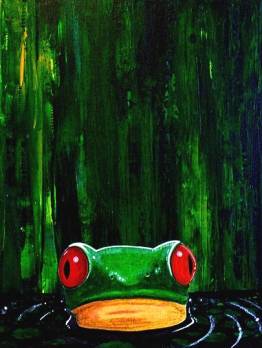
|
Affordable British ArtHow to GuidesHow to paint using Layers and Glazes There are any number of ways to paint and none are wrong. We adopt methods that we feel reward us. There is no correct length of time for a painting. Only the painter need know the time invested in a piece once his or her vision is realised or a new pleasing vision is created. Personally I use the technique of layering and glazes. I actually first learned of the benefits of this technique when first learning to paint with watercolours. It taught me that painting need not be generic to a perceived methodology and that the possibilities of paint are practically boundless, from psychotic bursts of abstract impressionism and deconstruction to the meticulous and photo realistic. It became apparent to me that when using this technique on say a wine bottle, I could achieve refraction and light bending, glass defects, molded in letters and even the seam found on modern bottles. The possibilities seemed astonishing yet simple if you thought in simple stages. Layering does sound like a rather laborious method of working with little room for spontaneity. This is not strictly so. You can start layering on anything, even onto abstract work. At a very basic level a glaze layer will provide you with a tinted filter allowing you to achieve a colour or tonality to cannot achieve with the traditional method of painting straight from the tube with toothpaste consistency. The one thing that puts people off glazes as a technique is the easel vs viscosity problem. Glazes are problematic on easels it has to be said. So if you wish to try glazes try with the canvas/board parallel to the ground. In acrylic terms glazes are basically a suspension of a desired amount of pigment in water. A great way to introduce yourself to glazes is to create a red or yellow glaze that is quite transparent (a bit like a sweet wrapper) and paint it onto the pages of a colour magazine. This will give you a sense of the opacities you can play with and it will immediately tint all the magazine colours into different colours. If you then soak parts of this back and go �wet in wet' in other areas, you will begin to see a control of tonality, still using the same glaze. The best method for creating a glaze is shaken, not stirred, in a plastic bottle. If you experiment with sky paintings you will see that glazes can add another dimension to the underside of clouds or to the surfaces of objects caught in light. Glazes can add that natural defocus of long focal lengths through warm air or that omnipresent pale lemon light as the sun drops at the end of the day in summer. Glazes give you the freedom to paint complex lighting effects and transparent objects by using the smallest amount of paint. At a more advanced level glazes can carry suspensions of soluble or non-soluble pencil filings to replicate the surface finish of bone or woodgrain, or pores even. Glazing can work well on top of pencil layers too. Acrylic quality is an issue with glazes. The more expensive the acrylic, the better it will mix with water and the more uniform the glaze will be. This is due to the way the pigment is manufactured. Experiment. Go back to one of your unsold, less attractive acrylic paintings (we've all got some) and mix up some glazes to start tinting areas or maybe adding highlights. You'll see a difference. You can completely transform all or part of a painting with a glaze� It's like looking at the world with rose tinted spectacles. The Old Masters have being doing it to great effect for hundreds of years. Both these pictures are heavily reliant on layers and glazes.
|
|
|
Copyright © Affordable British Art Maintained by Rhys Gardiner |
Home | Site Map | Info for Artists | Log Into Account | Contact Us | Terms & Conditions | Privacy Policy | Links | Links 2 |
|






